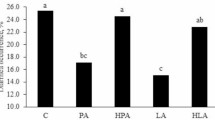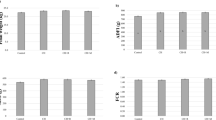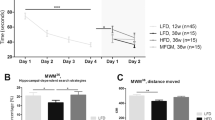Abstract
ABSTRACT: Mammalian cells require cholesterol for normal cell function. This requirement can be fulfilled by endogenous biosynthesis or by extracellular supplementation. Infants fed with human milk receive greater quantities of cholesterol than those fed commercial formulas. Whether this lack of cholesterol in commercial formulas poses a threat to normal neonatal cell function is not known. We compared small intestinal microvillus membrane fluidity, hydrolase activities, protein concentration, permeability to nonabsorbable markers, and weight gain in neonatal piglets receiving restricted intake of isocaloric formulas containing either normal amounts of cholesterol (145 mg/dl) or very low levels of cholesterol (<2 mg/dl). Using the fluorescent probe, diphenylhexatriene, and fluorescence polarization, microvillus membranes from cholesterol deprived piglets demonstrated higher fluidities than did microvillus membranes from animals fed normal concentrations of cholesterol. Cholesterol-deprived animals, even though their caloric intake was similar to cholesterol- fed animals, demonstrated a net weight loss per animal whereas the cholesterol-fed animals demonstrated a weight gain. These results demonstrate that in a pig model on a restricted intake, cholesterol deprivation alters the biophysical properties of the microvillus membrane.
Similar content being viewed by others
Log in or create a free account to read this content
Gain free access to this article, as well as selected content from this journal and more on nature.com
or
Author information
Authors and Affiliations
Rights and permissions
About this article
Cite this article
Neu, J., Engelhardt, E., Wu-Wang, C. et al. Alterations in Piglet Small Intestine after Cholesterol Deprivation. Pediatr Res 22, 330–334 (1987). https://doi.org/10.1203/00006450-198709000-00018
Received:
Accepted:
Issue date:
DOI: https://doi.org/10.1203/00006450-198709000-00018
This article is cited by
-
Increased maternal consumption of methionine as its hydroxyl analog promoted neonatal intestinal growth without compromising maternal energy homeostasis
Journal of Animal Science and Biotechnology (2016)
-
Scientifically-based strategies for nutrition of the high-risk low birth weight infant
European Journal of Pediatrics (1990)



